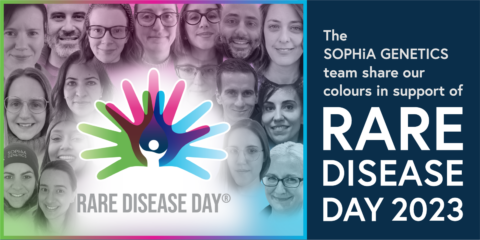Precision medicine increases the efficacy of medical intervention by providing the right treatment to the right patient at the right time. Precision medicine not only results in better patient care, but also reduces some of the economic burden associated with challenging diagnostic odysseys and ineffective treatment plans. The advancement of healthcare technology has made the idea of precision medicine a reality.
One of the biggest leaps in precision medicine was the identification of actionable genomic variants, or biomarkers, for the targeted treatment of cancer. About a year ago, we celebrated the 20th anniversary of the initial Human Genome Project publication, which allowed us to see the entire sequence of the human genome for the first time. Initiatives to close the gap in understanding the human genome continue today. For example, the All of Us project aims to collect over 1 million genomic sequences to increase the diversity of the current genomic knowledgebase. This research allows us to use machine learning and analytical algorithms to analyze genomic data and identify causative variants which can be used to select patients for targeted therapies.
Understanding our genomic blueprint made it possible to turn the idea of precision medicine into reality. Today we have access to precision immunotherapies and CAR-T cell treatments that can be used as alternatives to, or in combination with, traditional oncology care. Pembrolizumab is a prominent example of an immunotherapy for cancer patients with PD-L1 variations. Patients are tested for the specific PD-L1 biomarker to be considered a candidate for Pembrolizumab treatment. Another example of precision medicine in oncology care is CAR-T cell therapy, in which a patient’s own immune cells are modified with specific chimeric antigen receptors to help them destroy cancer cells in their own body. There are currently six FDA- approved CAR-T cell therapies for the treatment of lymphomas, leukemias, and multiple myeloma, and hundreds of ongoing clinical trials to target other types of cancers. You can learn more about CAR-T cell therapy from the American Cancer Society here.
However, cancer is an extraordinarily complex disease – to identify the most effective treatment, providers will have to move beyond a one gene to one drug mentality and rely more on comprehensive multimodal patient data. Patient genomic profiles can vary greatly -, a recent study found over 5000 unique mutations in 628 cancer-associated genes across 54 tumor types1. Multimodal patient data aims to go beyond genomics, to consider more comprehensive biomarkers from imaging, proteomics, transcriptomics, epigenomics, and phenotypic and medical health information. By combining these -omic profiles we get a holistic view of the individual and we can create more fractionalized and specific cohorts of individuals with better-defined disease states. These highly specific disease states can be used by pharmaceutical companies to develop new, more targeted, therapies, increasing efficacy and resulting in better patient outcomes.
Similarly to how genomic information became actionable, the use of other -omic data will also require extensive data collection and knowledgebase creation to identify relevant variants for specific disease states. Through machine learning, we will be able to extract trends from relevant cohorts to provide data beyond what is available in current reference databases, to generate knowledgebases with more global inclusion, diversity and knowledge. Providers will be able to leverage this data to classify patient profiles and to confidently identify treatment plans using predictive outcome capabilities created from similar patient profiles. Advances in cloud-data storage and machine-learning algorithms make this future more of a possibility. The field of precision medicine continues to evolve but remains steadfast in its goal to provide the right treatment to the right patients at the right time. Increases in the analysis and utilization of multimodal patient health data will help healthcare institutions achieve that goal.
References
- Zhao Y., et al. (2021) ‘PO2RDF:Representation of Real-world Data for Precision Oncology Using Resource Description Framework’, BMC Medical Genomics, in review.












